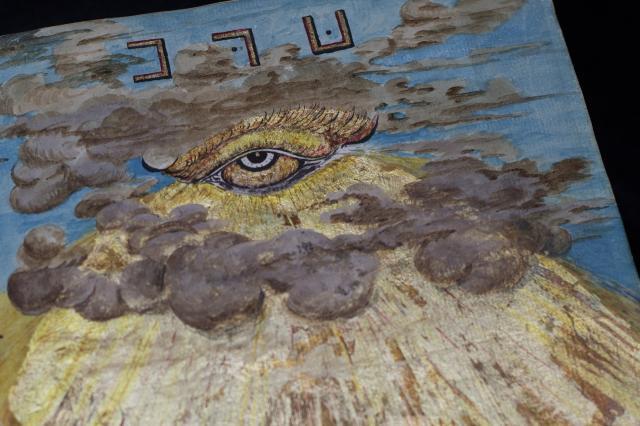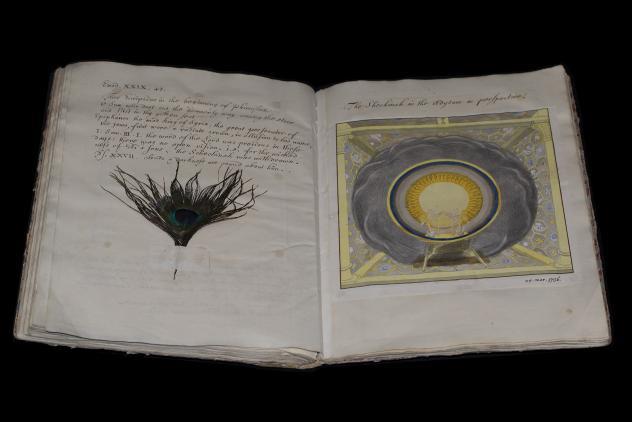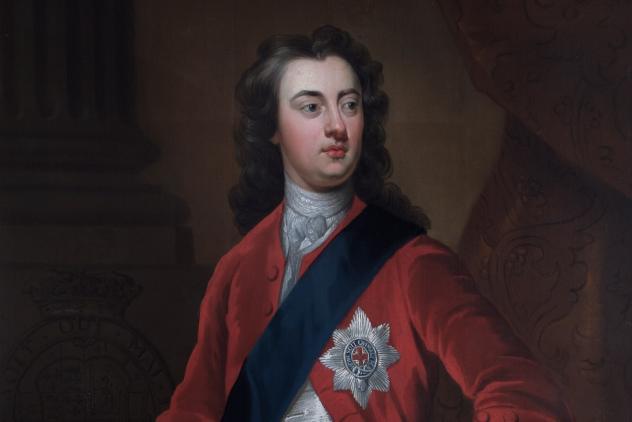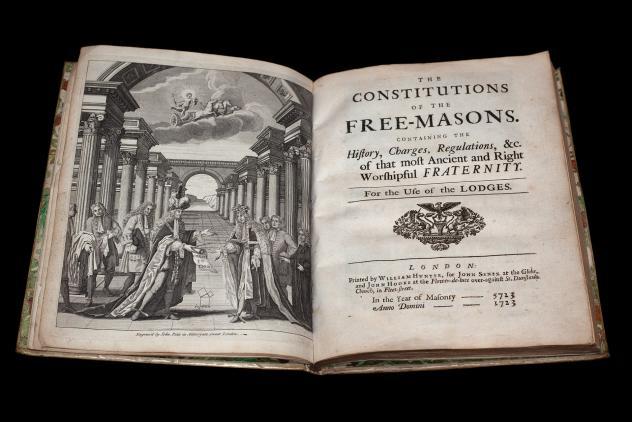In February 2020 we launched a new display to showcase some of the wonderful items in our library and archives. Treasures is a rotating selection and features some important as well as beautiful books, documents, prints and papers. Two of the team responsible for Treasures are Assistant Librarian Peter Aitkenhead and Assistant Archivist Louise Pichel, who each share with us here a personal favourite.

Peter has chosen the Irish Royal Arch certificate dated 1825:
What is immediately striking about this certificate is the brightness of the decoration despite the fact that it is nearly 200 years old; even the red ribbon has retained its colour.
All early Irish Royal Arch certificates have a style of their own and this is no exception. Many have quite distinctive designs and are crowded with emblems. When looking through the Museum’s certificates to select an example for this exhibition I found this to be one of the most striking of the hand-coloured 19th century examples we have. Unlike the mass-produced certificates of today, early examples such as this were produced specially for the recipient, making them unique.
What I found particularly interesting about this certificate is that it makes reference to elements of the Royal Arch ceremonies now no longer in use. The curtains at the top, for instance, are a reference to the Ceremony of the Veils which disappeared in England after 1835. The text refers to a sequence of degrees once worked in England but now obsolete. Many elements of the Royal Arch ceremony may have changed since this certificate was produced. I noticed, however, that the illustrations include the square, level and plumb line which are familiar to all freemasons as representing the Master, Senior Warden and Junior Warden of the lodge. By appearing on this 1825 Royal Arch certificate they emphasize that the relationship between the Craft and Royal Arch was just as important then as it is today.
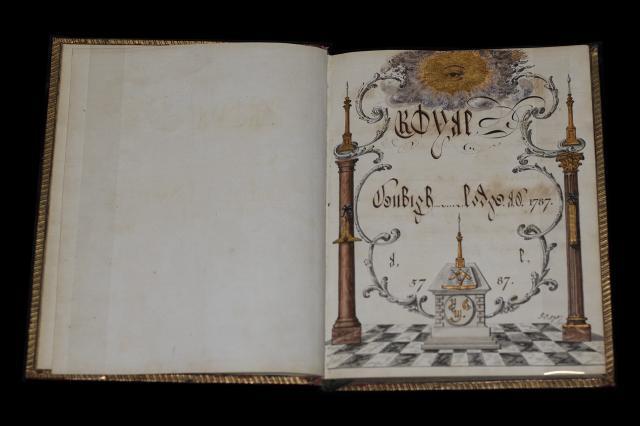
Louise says of her selection, the minute book and by-laws book of Royal Denbigh Lodge:
I love an unexpected discovery. As an archivist, it’s one of the best bits of the job. I’m responsible for sorting and cataloguing records belonging to lodges that have closed down and I’m often surprised by what arrives on my desk. One of my earliest finds was a lodge rule book, a minute book and an account book belonging to Royal Denbigh Lodge, dating from 1787. These are beautifully bound leather volumes and, when open, reveal even more stunning frontispieces. The fine illustrations are picked out in gold and are packed with symbolism.
Royal Denbigh Lodge wasn’t around for very long – it stopped meeting after 1811 – so it’s pretty amazing that these volumes have survived for us to enjoy. It was common for lodges to keep books like this to keep track of all their activities, but it’s really rare for them to be as decorative as this. I’ve certainly never seen anything like these before, or since, and they are a powerful reminder of the people behind the records we store in the Archives.
John Owens, the artist behind two of the Royal Denbigh frontispieces was clearly a very talented chap. The fact that he applied his skills in service to his lodge makes me wonder about what other talents the members had. Although there are registers giving details of members, they often only include a profession, which may only tell half the story. John Owens is listed simply as an Attorney.
There’s no mention of his considerable artistic flair so I’m very glad to have uncovered it in the records.
The Museum’s Library and Archives collection never ceases to surprise me. I hope Treasures inspires others to delve into our collections and find their own unexpected discovery.
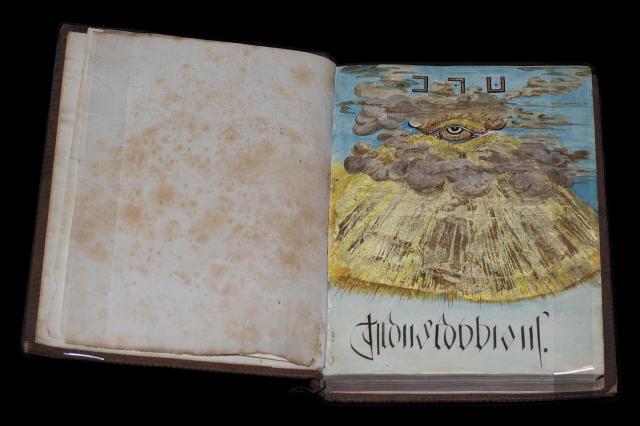
Treasures can be seen online until we can fully reopen to the public. It’s free to join the Library as a reader if you are keen on delving deeper. Why not sign up to discover more about freemasonry’s rich history and enjoy the treasures that are left to us all.
